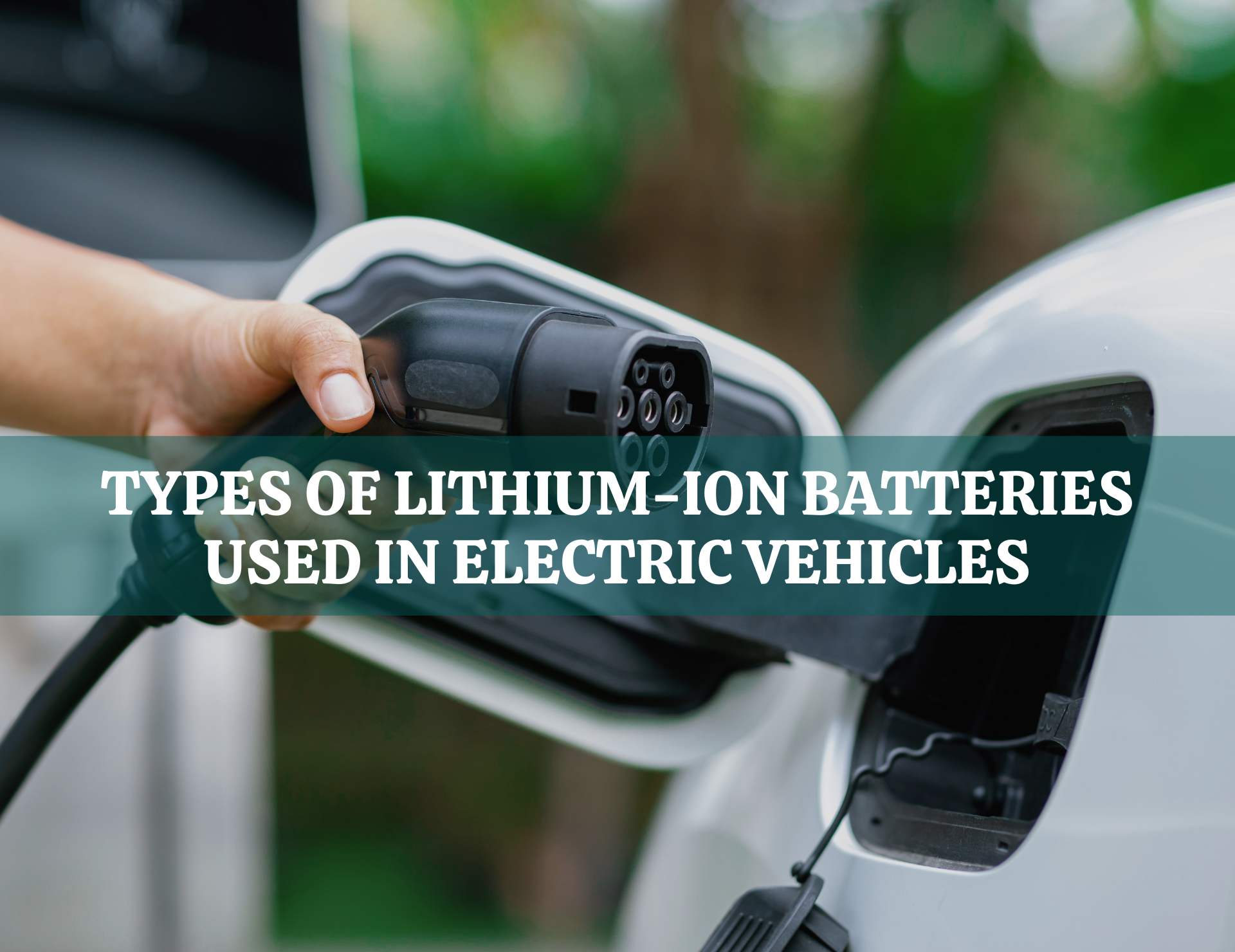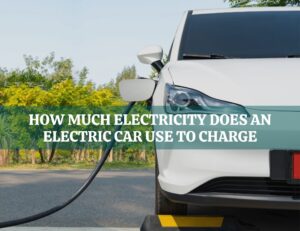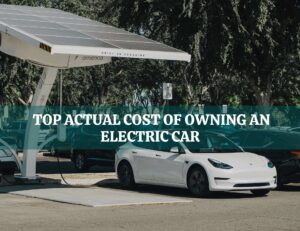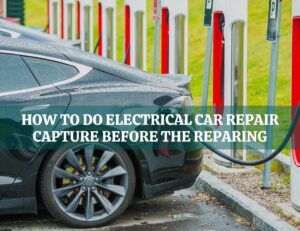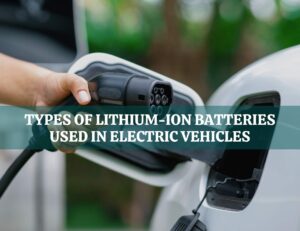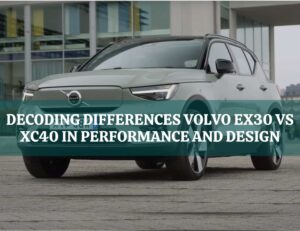In this article, we explore how to maintain the health of an electric car’s battery. We’ll discuss charging practices, temperature management, driving habits, and other factors affecting battery lifespan. We also provide a conclusion and answer common FAQs about electric car battery health.
How Can Proper Charging Practices Improve Battery Health?
Proper charging practices are crucial for extending the lifespan of an electric car’s battery. It’s best to avoid charging the battery to 100% or letting it drain to 0%. Keeping the battery charge between 20% and 80% is ideal. This range minimizes stress on the battery and prevents degradation over time.
Using the recommended chargers is also important. Avoid third-party chargers unless they are certified for your vehicle. Fast charging should be used sparingly, as it generates more heat and can reduce battery longevity. Instead, use Level 2 chargers for regular charging needs to maintain battery health.
Electric cars primarily use the following types of batteries
Lithium-Ion (Li-Ion) Batteries:
- Most Common: Predominantly used in modern electric vehicles (EVs).
- Advantages: High energy density, long cycle life, good thermal stability, and lower weight.
- Applications: Used by major manufacturers like Tesla, Nissan, and Chevrolet.
Nickel-Metal Hydride (NiMH) Batteries:
- Secondary Usage: More common in hybrid vehicles rather than full electric cars.
- Advantages: Good energy density, robust and long lifespan, and safer compared to some other types.
- Disadvantages: Higher self-discharge rate and lower efficiency compared to Li-Ion.
- Applications: Previously used in Toyota Prius and other hybrids.
Solid-State Batteries:
- Emerging Technology: Not yet widely commercialized but holds great promise for the future.
- Advantages: Higher energy density, improved safety, and longer lifespan compared to Li-Ion batteries.
- Challenges: High manufacturing costs and technological hurdles in mass production.
Lithium Iron Phosphate (LiFePO4) Batteries:
- Subset of Li-Ion: Known for their thermal stability and safety.
- Advantages: Longer cycle life and better thermal and chemical stability.
- Disadvantages: Lower energy density than other Li-Ion batteries.
- Applications: Increasingly used in electric buses and lower-end EVs, particularly in China.
Lithium-Sulfur (Li-S) Batteries:
- Research Phase: Potential future battery technology with high energy density.
- Advantages: Theoretically higher energy density than Li-Ion batteries.
- Challenges: Issues with cycle life and stability are currently being addressed in research.
Ultracapacitors:
- Complementary Technology: Often used in combination with other battery types for rapid charging and discharging.
- Advantages: High power density, rapid charge/discharge cycles, and long lifespan.
- Disadvantages: Lower energy density compared to chemical batteries.
- Applications: Used in specific applications like regenerative braking systems.
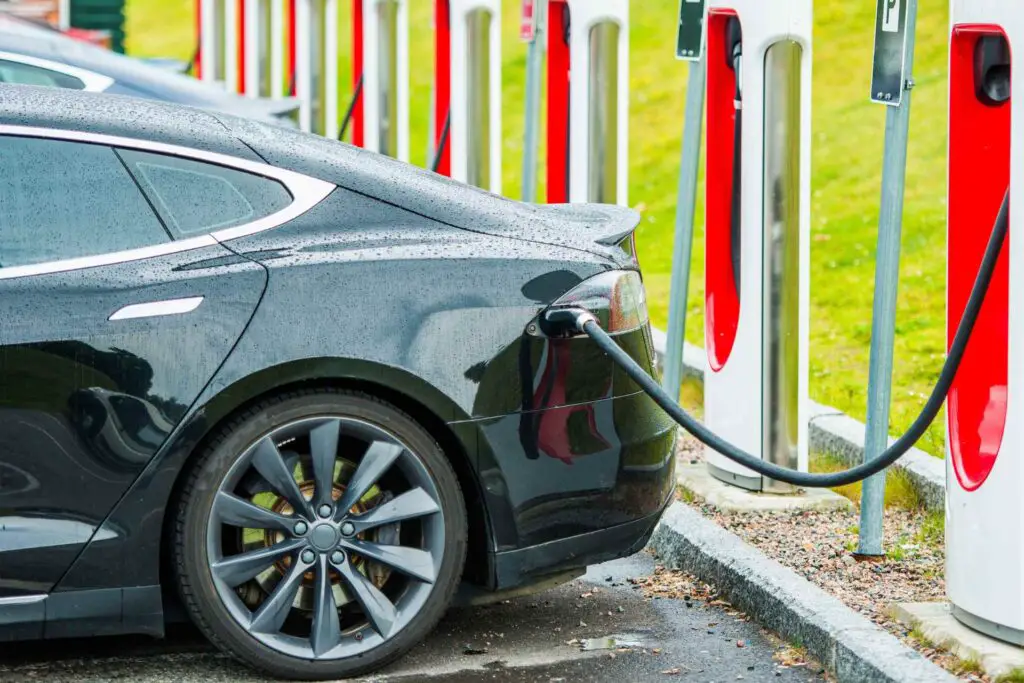
According to the battery, what are the ways to maintain them
Maintaining electric vehicle (EV) batteries properly can significantly extend their lifespan and ensure optimal performance. Here are key maintenance tips for the most common types of EV batteries:
General Maintenance Tips Lithium-Ion (Li-Ion) Batteries
Optimal Charging Practices:
- Avoid Full and Empty States: Try to keep the battery charge between 20% and 80%. Avoid letting the battery charge drop to 0% or stay at 100% for extended periods.
- Use Proper Chargers: Always use the recommended chargers and avoid third-party chargers unless they are certified for your vehicle
Temperature Management:
- Avoid Extreme Temperatures: Lithium-ion batteries perform best at moderate temperatures. Avoid exposing the battery to extreme heat or cold, which can degrade its performance and lifespan.
- Use Thermal Management Systems: Many modern EVs come with built-in thermal management systems. Ensure these systems are functioning correctly.
Driving Habits:
- Smooth Driving: Aggressive driving with rapid acceleration and frequent hard braking can strain the battery. Smooth and steady driving helps maintain battery health.
- Regenerative Braking: Use regenerative braking effectively to recapture energy and reduce wear on the battery.
Regular Software Updates:
- Update Firmware: Manufacturers often release software updates that can optimize battery performance and longevity. Ensure your vehicle’s firmware is up to date.
- Routine Checks:
- Battery Health Monitoring: Use onboard diagnostic tools to monitor battery health regularly. Pay attention to any warnings or alerts related to battery performance.

Maintenance Tips for Nickel-Metal Hydride (NiMH) Batteries
Charging Practices:
- Regular Charging: NiMH batteries should be kept charged and not allowed to fully discharge frequently.
- Avoid Overcharging: Use chargers that prevent overcharging to maintain battery health.
Temperature Considerations:
- Moderate Temperatures: Like Li-Ion batteries, NiMH batteries perform best at moderate temperatures. Avoid prolonged exposure to extreme temperatures.
Storage:
- Proper Storage: If the vehicle is not used for an extended period, store the battery at a moderate charge level (around 50%) and in a cool, dry place.
Maintenance Tips for Solid-State Batteries
Follow Manufacturer Guidelines:
- Adherence to Guidelines: As solid-state batteries are relatively new and specific maintenance practices may vary, always follow the manufacturer’s guidelines for charging and usage.
Monitor Technological Updates:
- Stay Informed: Solid-state battery technology is rapidly evolving. Stay informed about any new recommendations or practices as they become available.
Additional General Tips
- Avoid Fast Charging When Possible:
- Limit Fast Charging: Frequent use of DC fast charging can generate more heat and stress the battery. Use Level 2 charging for regular charging needs when possible.
- Routine Maintenance:
- Regular Service: Have your EV regularly serviced by certified technicians to ensure all battery management systems are functioning correctly.
- Battery Warranty:
- Warranty and Support: Be aware of your battery’s warranty terms and conditions. Many manufacturers offer extended warranties on EV batteries, which can be helpful in case of premature degradation.
Why Is Temperature Management Important?
Temperature management is vital for maintaining the health of an electric car’s battery. Batteries perform best at moderate temperatures. Exposure to extreme heat or cold can cause the battery to degrade faster. For example, high temperatures can increase the rate of chemical reactions inside the battery, leading to faster wear and reduced capacity.
Many modern electric vehicles come equipped with thermal management systems. These systems help regulate the battery’s temperature, ensuring it remains within the optimal range. Regularly check to ensure your car’s thermal management system is functioning properly to protect your battery from temperature-related damage.
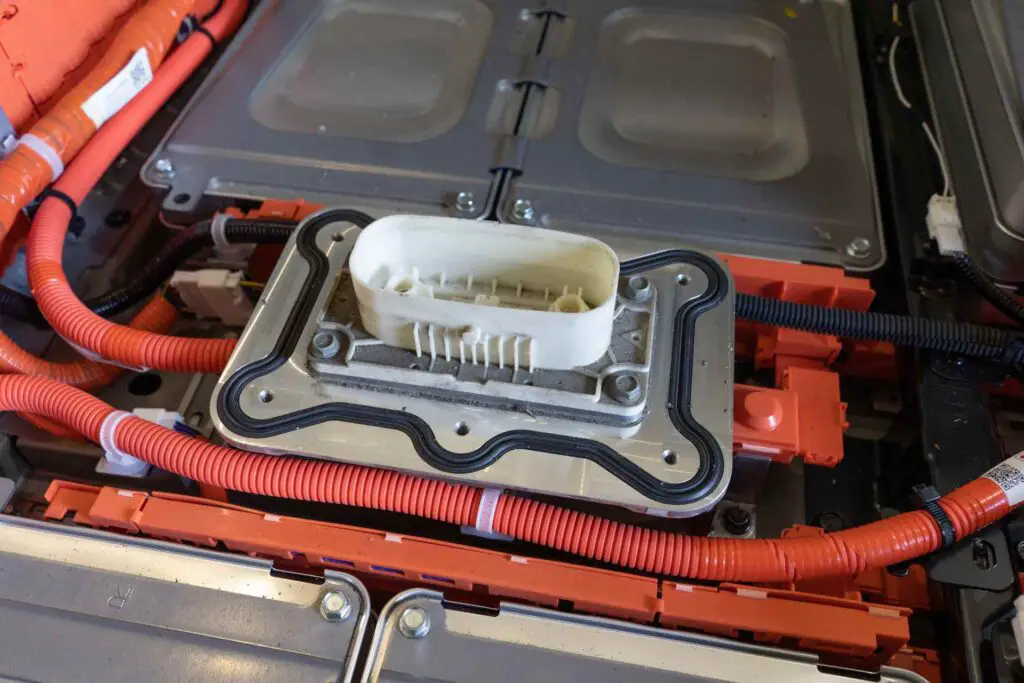
How Do Driving Habits Affect Battery Lifespan?
Driving habits significantly impact the health and lifespan of an electric car’s battery. Aggressive driving, such as rapid acceleration and frequent hard braking, can strain the battery. This kind of driving leads to quicker discharges and generates more heat, both of which can degrade the battery faster.
Smooth and steady driving is better for battery health. It helps maintain a stable discharge rate and reduces thermal stress. Additionally, using regenerative braking effectively can recapture energy and reduce wear on the battery. Regenerative braking converts kinetic energy back into stored energy, enhancing efficiency and longevity.
What Role Does Regular Maintenance Play?
Regular maintenance is essential for ensuring the health of your electric car’s battery. Routine checks of the battery health through onboard diagnostic tools can help you identify potential issues early. Pay attention to any warnings or alerts related to battery performance and address them promptly.
Firmware updates released by manufacturers can optimize battery performance and longevity. Keeping your vehicle’s software up to date ensures you benefit from the latest advancements in battery management technology. Regular service by certified technicians also helps maintain the battery and overall vehicle health.
Can Storage Conditions Affect Battery Health?
Yes, storage conditions can significantly affect the health of an electric car’s battery. If the vehicle is not used for an extended period, it’s important to store the battery at a moderate charge level, typically around 50%. Storing a battery fully charged or completely discharged can lead to capacity loss.
The storage environment also matters. Batteries should be kept in a cool, dry place. Avoiding extreme temperatures and high humidity is crucial. Proper storage practices help prevent battery degradation and ensure it remains in good condition, even when not in use for long periods.
What is the maximum lifespan of these batters
The lifespan of electric vehicle (EV) batteries can vary significantly depending on the type of battery, how it’s used, and the conditions it’s subjected to. Here’s an overview of the expected lifespan for different types of EV batteries, along with factors influencing their longevity:

Lithium-Ion (Li-Ion) Batteries
- Maximum Lifespan: Typically 8-15 years or about 100,000 to 200,000 miles.
- Charging Cycles: Li-Ion batteries generally last for about 1,000 to 2,000 full charge-discharge cycles.
- Factors Influencing Lifespan:
- Temperature: Exposure to extreme temperatures (both hot and cold) can degrade the battery faster.
- Charging Practices: Regularly charging to 100% and discharging to 0% can reduce lifespan. Keeping the battery between 20-80% can help prolong its life.
- Fast Charging: Frequent use of fast chargers can increase heat generation, which may reduce battery lifespan over time.
- Driving Habits: Aggressive driving can cause more rapid battery discharge and increased wear.
Nickel-Metal Hydride (NiMH) Batteries
- Maximum Lifespan: Around 10 years or about 100,000 to 150,000 miles.
- Charging Cycles: Typically 500 to 1,000 full charge-discharge cycles.
- Factors Influencing Lifespan:
- Charging Practices: Avoiding frequent deep discharges and overcharging helps extend the battery’s life.
- Temperature: NiMH batteries are more sensitive to high temperatures, which can shorten their lifespan.
- Usage: Hybrid vehicles with NiMH batteries generally have longer battery lifespans due to the frequent cycling between the battery and gasoline engine.
Solid-State Batteries
- Maximum Lifespan: Potentially up to 15-20 years, but this technology is still in development and not widely used in commercial EVs yet.
- Charging Cycles: Expected to last for about 3,000 to 5,000 cycles.
- Factors Influencing Lifespan:
- Technology Maturity: Solid-state batteries are still emerging, so real-world data is limited.
- Temperature: Expected to be more stable and less sensitive to temperature extremes compared to Li-Ion batteries.
- Usage Patterns: Early usage patterns will inform more about the actual lifespan as the technology matures.
Lithium Iron Phosphate (LiFePO4) Batteries
- Maximum Lifespan: Around 10-15 years or about 200,000 to 300,000 miles.
- Charging Cycles: Typically 2,000 to 3,500 full charge-discharge cycles.
- Factors Influencing Lifespan:
- Temperature: Better thermal stability compared to other Li-Ion variants.
- Charging Practices: Less prone to degradation from full charges compared to other Li-Ion batteries.
- Usage: Common in commercial and industrial applications where long cycle life is critical.
General Tips to Maximize Battery Lifespan
- Moderate Charging: Avoid frequent full charges and deep discharges. Aim to keep the battery between 20% and 80% charge.
- Temperature Management: Protect the battery from extreme temperatures by parking in shaded or temperature-controlled environments.
- Avoid Excessive Fast Charging: Use fast charging sparingly and rely more on Level 2 charging for daily needs.
- Regular Use: Regularly using the vehicle helps keep the battery in good condition, as opposed to letting it sit unused for extended periods.
- Firmware Updates: Keep the vehicle’s software up-to-date to benefit from the latest battery management improvements.
By adhering to these best practices, you can help ensure your EV battery maintains its performance and extends its lifespan.
How Can You Monitor and Maximize Battery Lifespan?
Monitoring and maximizing battery lifespan involves a combination of good practices and regular checks. Use your car’s onboard tools to monitor battery health regularly. This monitoring can alert you to any issues that might need attention before they become serious problems.
To maximize battery lifespan, follow best practices such as moderate charging, avoiding extreme temperatures, and maintaining smooth driving habits. Stay informed about any new recommendations or technological advancements that might benefit battery health. Being proactive and informed can greatly extend the life and efficiency of your electric car’s battery.
Conclusion
Maintaining the health of an electric car’s battery is essential for ensuring its longevity and performance. Proper charging practices, temperature management, and mindful driving habits play key roles. Regular maintenance and attention to storage conditions also contribute to extending battery life. By following these guidelines, you can maximize the lifespan of your electric car’s battery, ensuring reliable performance for years to come.
FAQs
1. How often should I charge my electric car to 100%?
Charging to 100% should be limited to when you need the full range for long trips. Regularly charging to 100% can degrade the battery faster.
2. Is it okay to use third-party chargers?
Only use third-party chargers that are certified for your vehicle to avoid potential damage to the battery.
3. Can extreme cold affect my electric car’s battery?
Yes, extreme cold can reduce the battery’s efficiency and range temporarily. Proper thermal management can help mitigate this.
4. How can I tell if my battery is degrading?
You can monitor battery health using the car’s onboard diagnostic tools, which can indicate signs of capacity loss or other issues.
5. What is regenerative braking and how does it help?
Regenerative braking converts kinetic energy into stored energy, reducing wear on the battery and enhancing efficiency.
6. Should I keep my electric car plugged in when not in use?
For long-term storage, it’s best to keep the battery at a moderate charge level around 50%, rather than fully charged or completely drained.


